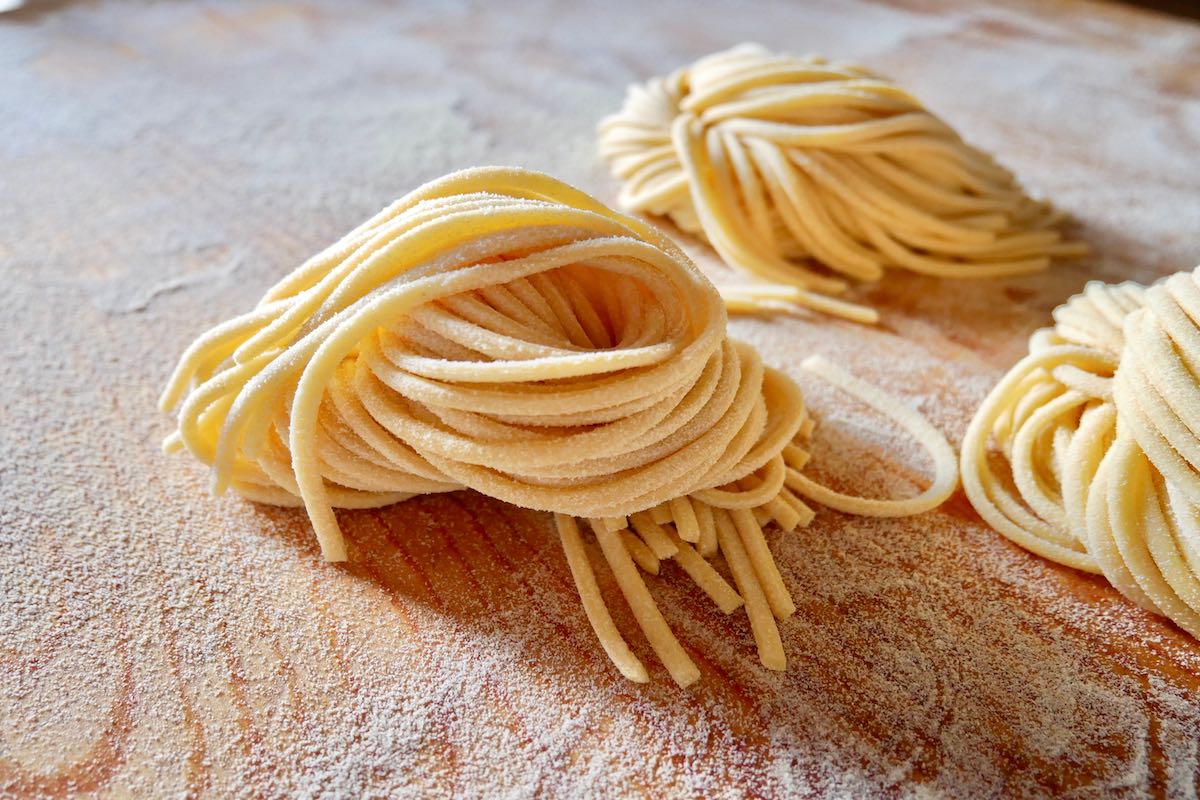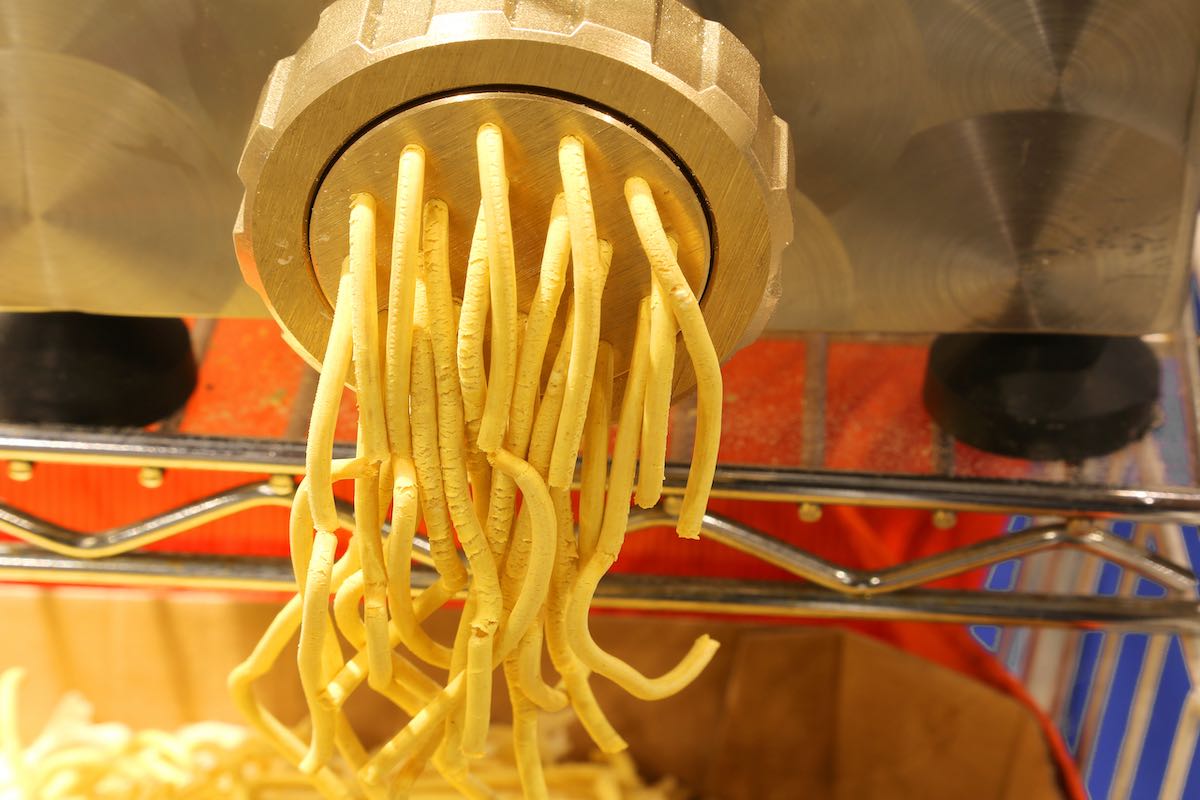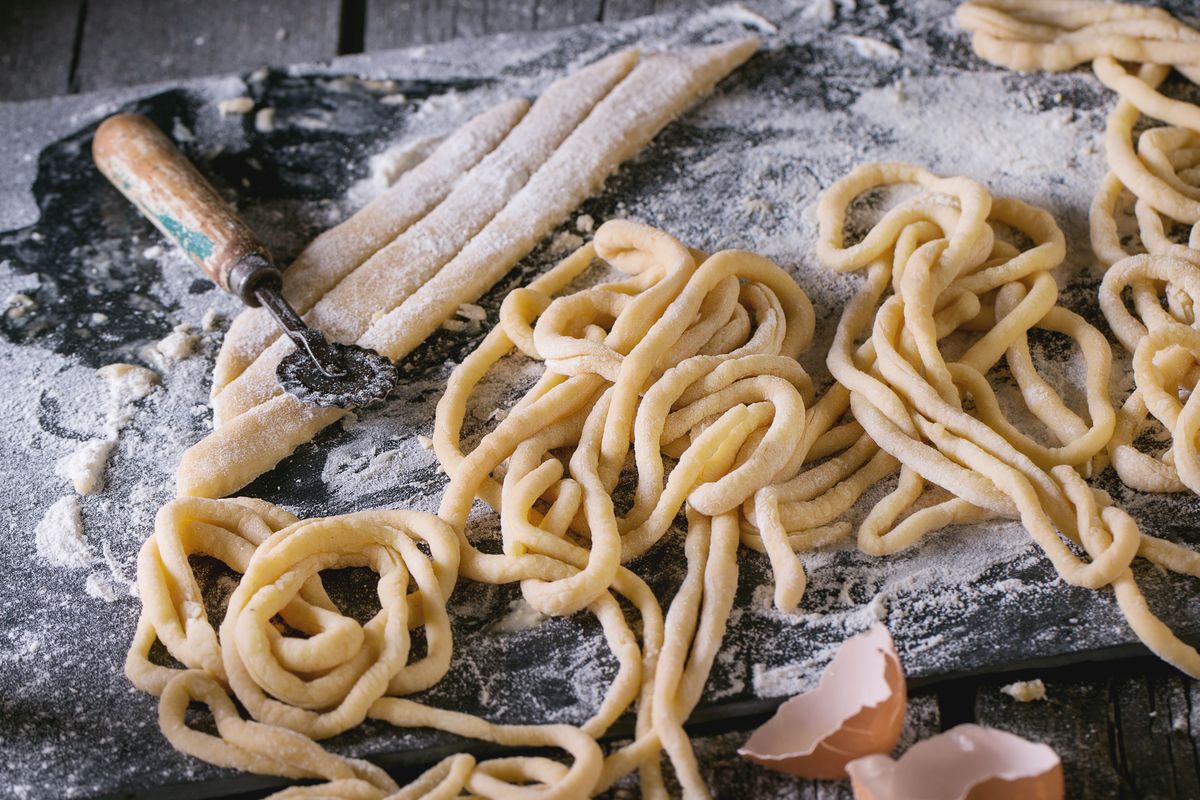Recipes
Bigoli, the recipe to make them at home


Bigoli are a typical pasta shape from the Veneto region. Preparing them at home is quite simple with our recipe even without the special press.
Homemade bigoli are simple to prepare and although today there is the custom of using the press with a special die , tradition dictates that they are prepared by hand. Still on the subject of tradition, there are those who prepare them with 00 flour and eggs and those who prefer to recall the humble nature of the dish by using only flour and water .
We referred to the recipe of the Confraternita dei Bìgoi al Torcio, creating a dough similar to egg pasta. Only a little water will need to be added to adjust the final consistency of the dough. We will then discover how to prepare bigoli with the torch but also without using common utensils present in the kitchen.

How to prepare the recipe for bigoli, Venetian pasta
- First, make a well in the flour and crack the eggs in the centre.
- As usual, start kneading with a fork, gradually drawing in the flour from the edges. When the dough begins to take consistency, continue working it by hand . It should be smooth and not too hard so add a little water if needed. If you want, you can use a stand mixer with a dough hook.
- Once ready, let it rest for 30 minutes under an inverted bowl or wrapped in cling film.
- Divide it into 4-5 parts, place them one at a time in the press and turn it on. Cut the bigoli to the length you prefer.
- Alternatively you can use the meat grinder by removing the blades and leaving only the central spiral or use a special bronze die to be mounted on your mixer. The last resort for homemade bigoli is the potato masher but you will hardly be able to obtain a decent length.
- Leave them to dry on a floured pastry board for at least 30 minutes before proceeding with cooking.
- The bigoli cook in plenty of salted water for 8-10 minutes . Always taste them because a lot depends on the diameter obtained.
In this video you can see how the special press for bigoli, the bigolaro, works, but also get an idea of the consistency of the dough and the diameter of the spaghetti.
Bigoli without eggs
Since it is a poor first course, it is natural to think that the first versions were based only on flour and water . We also tried the bigoli without eggs, following the same procedure and the result was still excellent. This variant is also perfect for those who follow a plant-based diet . To prepare them you will need:
- 200 g of 00 flour
- 200 g of re-milled semolina flour
- 200 ml of water
First mix the two flours then gradually add the water, kneading first with a fork and then by hand on the pastry board. Also in this case, after 30 minutes of rest , divide the dough and make the bigoli with the technique you prefer. Leave to dry for half an hour before cooking in boiling salted water.
How to season bigoli
Bigoli can be seasoned in many ways, just like the more classic pasta. However, if you want to stick to tradition then we recommend the bigoli in salsa , with a sauce based on onions and salted anchovies stewed over a low heat; bigoli with duck sauce , perfect for a Sunday with the family or bigoli with sardines.
Conservation
The bigoli can be kept for a couple of days in the refrigerator, covered with a cloth.
Origin and history
It wasn't easy to unravel the multitude of stories that hover around this dish. In fact, their origin is not well defined. According to some, they were born in 1300 , during the war between Venice and Turkey. The Turks bombed ships containing grain headed for the lagoon so the city was left without it. A cook ingeniously mixed a little soft wheat flour with water and some durum wheat flour, thus obtaining the first version of bigoli.
More likely, however, the dish is a legacy of the soy vermicelli discovered in China by Marco Polo . It was the explorer who brought the ancestor of the bigoli press to Venice, developed and patented only in 1604 in Padua by the pasta maker Bertolomio Veronese known as Abbondanza . The bigolaro, or torcio bigolaro , is the press equipped with a bronze die used for the preparation of bigoli.
But what is the origin of the name? The most accredited hypothesis assimilates the term bigoli to bigat , a dialect term indicating caterpillar. According to others, however, it was the name of the curved stick used by pasta makers to transport water and flour. In any case, time passes but the recipe has not lost its importance: in addition to the aforementioned Confraternita (founded in 2004), every year there are several festivals dedicated to this pasta, one above all the Bigoli Festival of Limena in the province of Padua.
Riproduzione riservata © - WT












